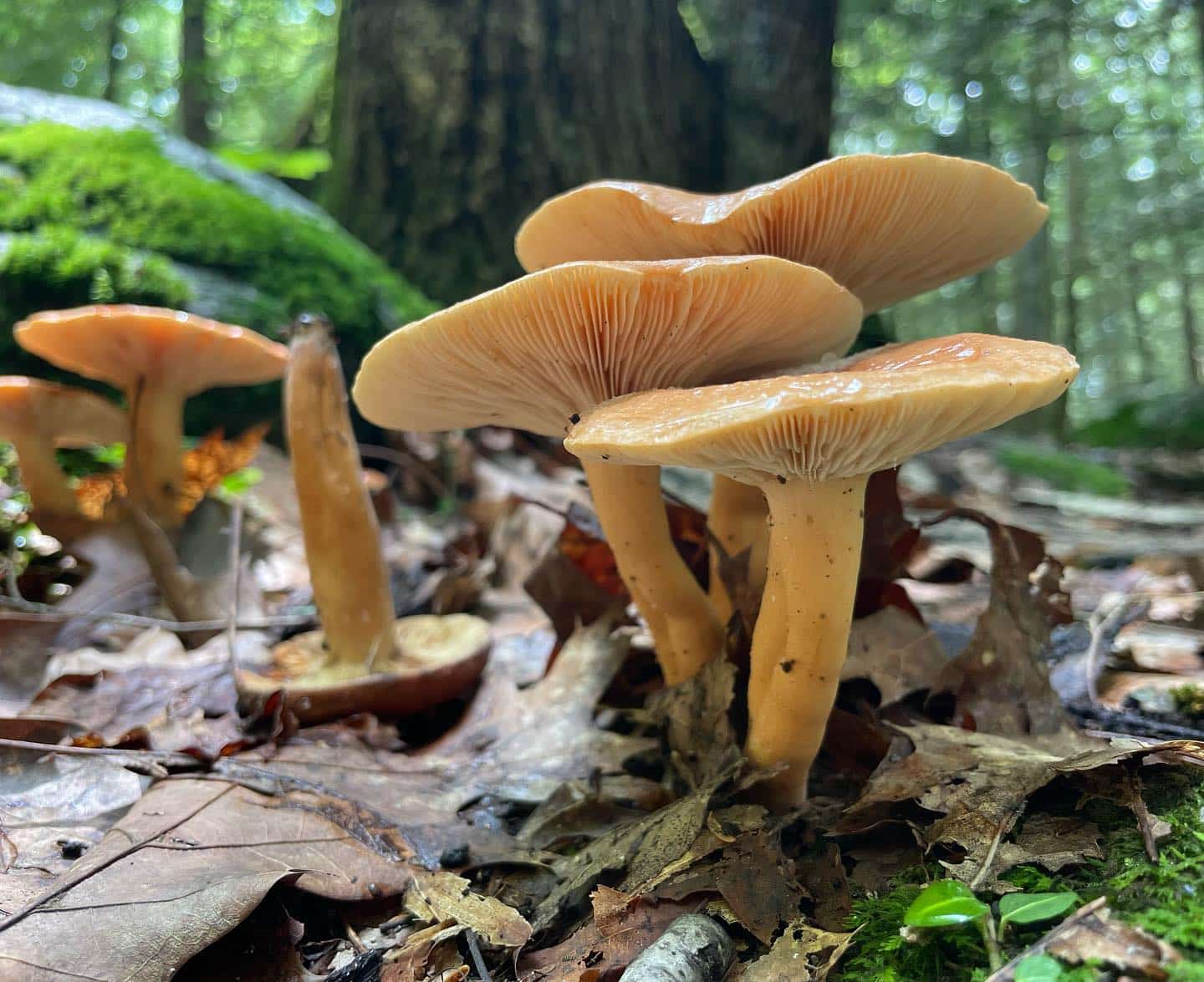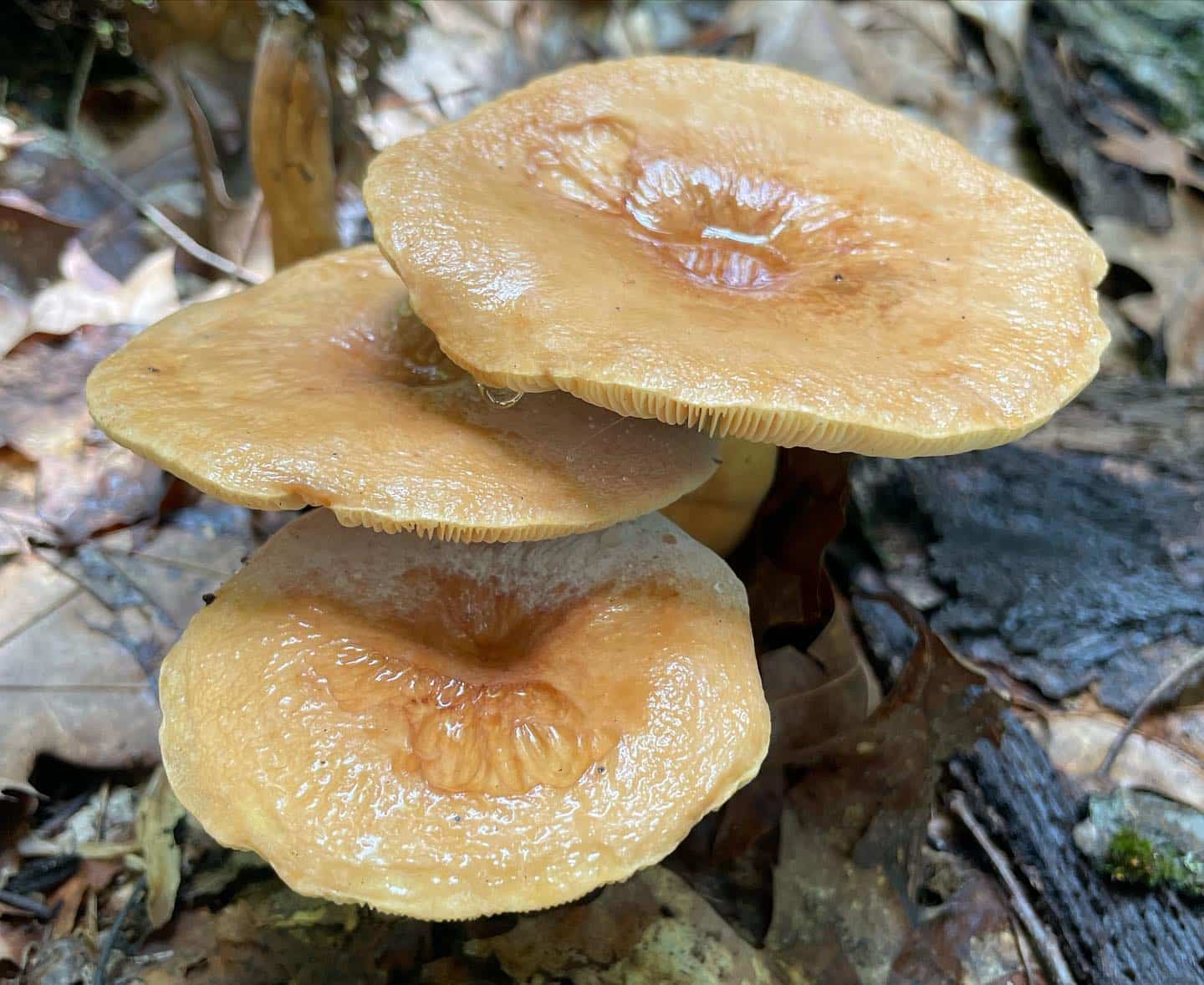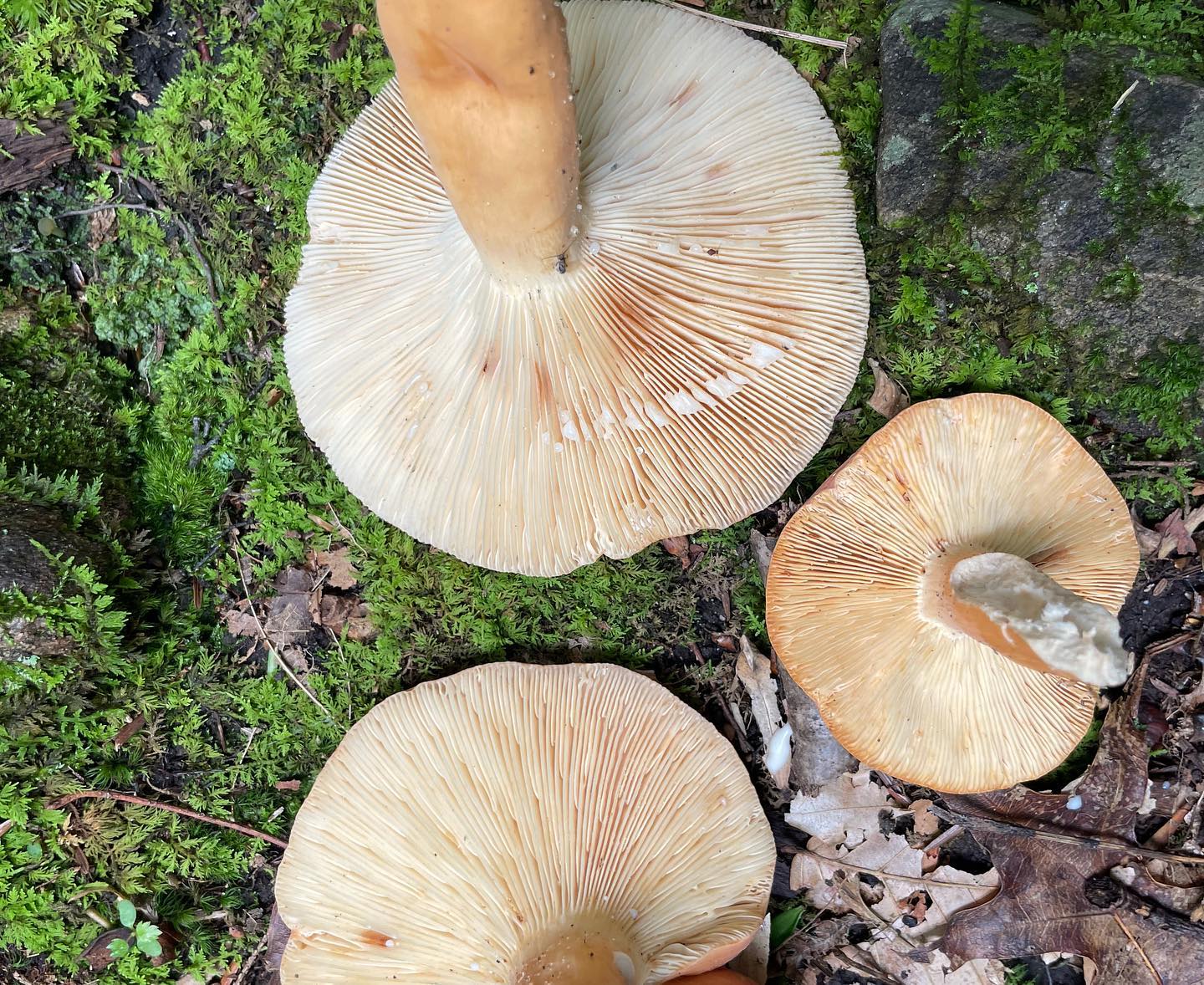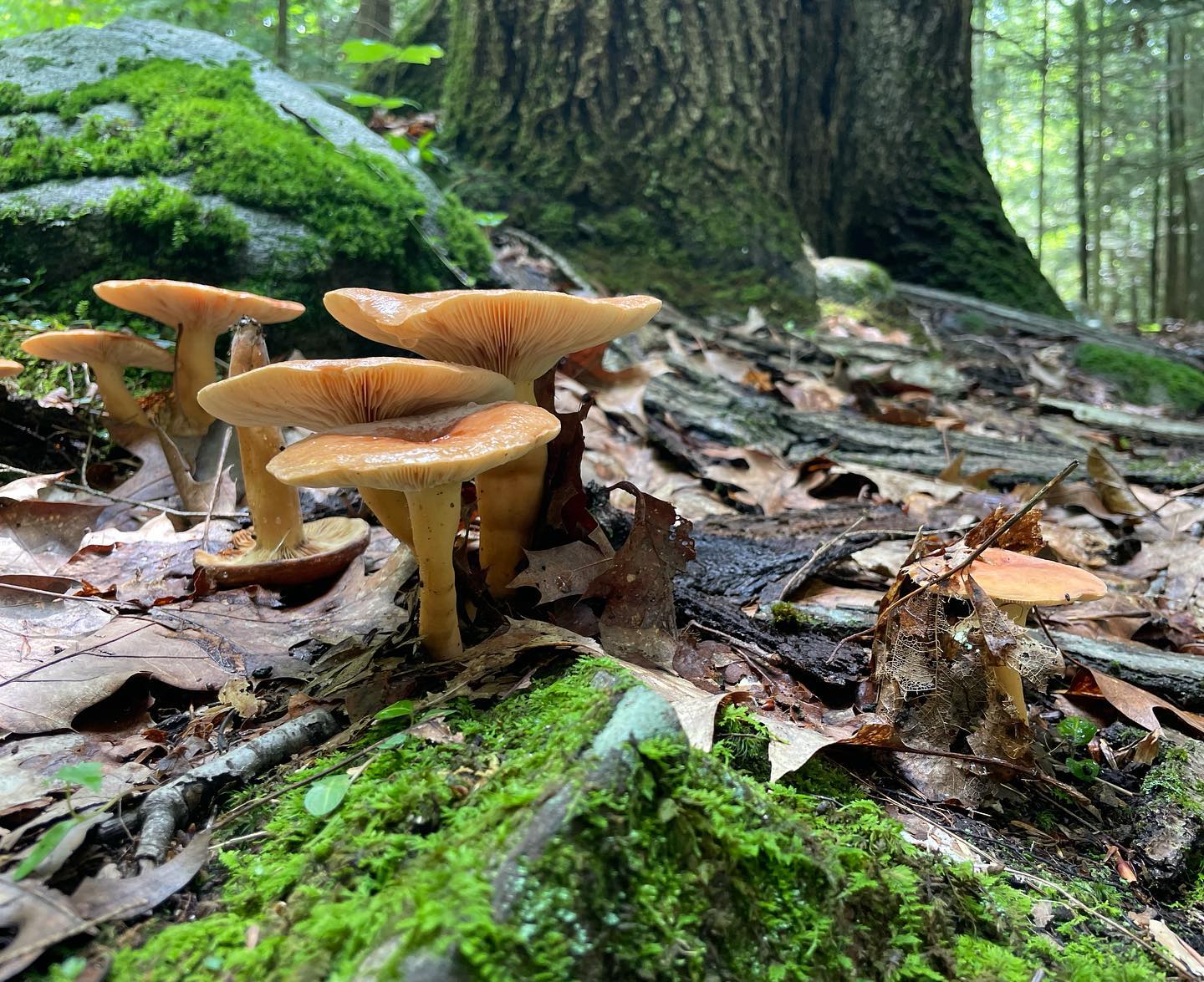Page Created by Connecticut Foraging Club
Upcoming Events | Meet the Instructors | Plant Archive | Mushroom Archive
----------------
Upcoming Events | Meet the Instructors | Plant Archive | Mushroom Archive
----------------
The Weeping Milkcap, also known as the Voluminous Latex Milky (Lactifluus volemus), is an edible milkcap that can be found June-September. Milkcaps exude a latex, milky substance when cut as a defense mechanism from predators.

The Weeping milkcap can be found worldwide with slight differences. It is now considered a species complex with potentially different species all being classified as Lactifluus volemus.

The Weeping milkcap has an orange-brown cap which is minutely velvety. The cap is convex when young, becoming flat and sometimes funnel shaped with age. The mushroom has a distinct fishy smell. Copious amounts of white latex exude from cut gills and stain the gills brown. The latex is mild tasting. The spore print is white.

Weeping milkcaps grow singularly or in groups near hardwood or conifer trees. The mushrooms are ectomycorrhizal, increasing the surface area of tree roots to help the plant absorb nutrients from the soil.

Weeping milkcaps are edible after cooking. They have a somewhat nutty flavor and slightly granular texture. They are best when slow cooked.

Weeping milkcaps can be differentiated from the also edible Hygrophorus Milky (Lactifluus hygrophoroides) by their gills and scent. The Hygrophorus milky has more widely spaced gills that do not stain brown from the latex. The Hygrophorus milky also lacks the fishy scent.
Weeping milkcaps may also be confused with the edible Corrugated-cap milky (Lactifluus corrugis). Corrugated-cap milkies have a more wrinkled cap which tends to be a darker red color.
--
Written by Amy Demers, founder of the Connecticut Foraging Club. To learn more about foraging in Connecticut, check out our upcoming classes.






